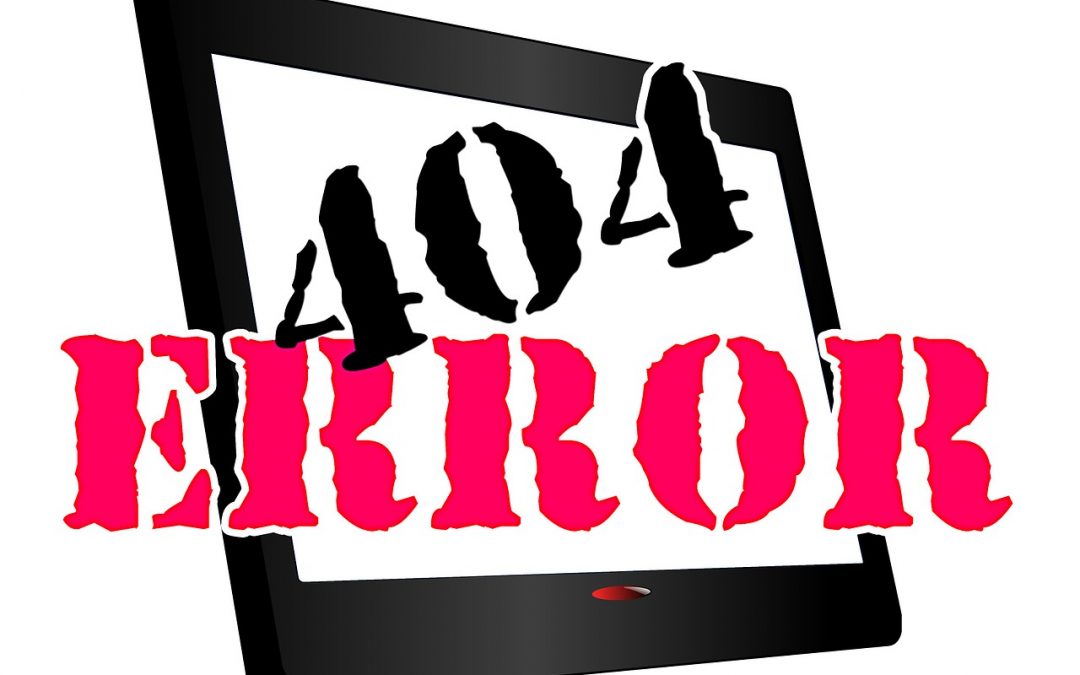
by Employment Screening Alliance | Aug 24, 2016 | Fingerprinting
Fingerprinting | Top Six Form I-9 Compliance Mistakes Pt. 1
Fingerprinting | To many employers and HR professionals, an I-9 form may appear to be a simple one-page piece of hiring paperwork. However, the one page I-9 form comes with enough rules and regulations to fill a 69-page how-to manual, the M-274 Handbook for Employers.
There are many common mistakes and human errors that can be made while completing and maintaining I-9 records. If an employer fails to complete or maintain I-9 documentation correctly, that employer may fall out of compliance with Immigration and Customs Enforcement (ICE) rules and suffer harsh financial penalties.
Fines for I-9 errors begin at $110 dollars per error and climb to tens of thousands of dollars per error for repeat and grave offenses. If an employer has one form per employee and multiple mistakes on each form, the financial penalties could quickly escalate into six and seven figures.
For example, a well-known clothing retailer recently reached a settlement with ICE regarding I-9 documentation violations discovered during a 2008 audit. The company will pay more than $1 million dollars in fines and must cooperate with federal authorities by modifying its electronic I-9 management systems.
In addition to the steep fines and system upgrades, it is likely that the company incurred additional expenses including legal costs and the added time for its employees to respond to the audit.
To avoid the potentially high costs of an I-9 violation, employers should keep these six common I-9 processing errors in mind:
1. Incorrect or Missing Forms
Common I-9 documentation mistakes include, but are not limited to, incorrect dates, missing signatures, transposed information and incomplete check boxes. It is also possible for an employer to fail to complete an I-9 form altogether or misplace a completed form during filing.
Another challenge facing employers is to record the correct document codes for each identification method. These codes are similar to a routing number on a personal check and appear as strings of embedded numbers in different locations on different forms of identification. If an employer asks for too many identifying documents from list A or lists B and C, that could expose the employer to discrimination allegations. Asking for too few documents could result in an incomplete form violation.
2. Out of Compliance with the Three-Day Rule
ICE rules stipulate that I-9 forms must be completed within three business days of the employee’s first day of work. This means that the employee must complete section one of the form, provide identification documents and have those documents verified by the employer, all within three business days.
Sometimes a new employee will forget to bring documentation within three days of hire. For companies with multiple locations, it may be challenging to get all forms and documents complete and verified and then send them on to a separate corporate location. If an employer fails to meet the three-day deadline, it could result in hefty fines
3. Failure to Re-verify
For employees of certain citizenship statuses, employers will need to track and update the employee’s supporting I-9 documentation. For example, at the time of hire, a work-authorized alien will provide documentation showing their eligibility to work in the United States. This supporting documentation includes an expiration date and it is the employer’s responsibility to monitor that date and request new documentation prior to expiration.
It is extremely time-consuming to manually track the expiration dates for supporting documentation and remind workers to provide updated documents in a timely fashion. Even with complicated spreadsheets and filing systems, there is still room for human error on the employer and employee side. Employees can easily slip through the cracks unverified and cause the company to be out of compliance. -Hireright
Learn what ESA can do for you! Call 866-830-3724 to discuss fingerprinting services or complete the form on www.esascreening.com now!

by Employment Screening Alliance | Aug 23, 2016 | Fingerprinting
Fingerprinting | 4 Common Flaws Pt. 2
Fingerprinting | Employers that are regulated by certain authorities such as the Federal Aviation Administration, Department of Health and Human Services or the Department of Transportation must understand the drug and alcohol testing requirements to which they must adhere, or they could face severe fines.
3. Screening is Not Comprehensive
While 65 percent of Benchmarking Report respondents conduct drug testing, only 39 percent of those have implemented a random drug testing program. This could expose a substantial gap where drug use after the date of hire may go undetected.
Another risk identified by the Benchmarking Report is the uneven implementation of drug testing across the contingent workforce. According to the Benchmarking Report, only 22 percent of respondents conduct drug testing on contingent workers, and they do not randomly test these workers. For employers with a large contingent workforce, this oversight could create substantial risks.
4. Failure to Address Medical Marijuana Laws
Currently, 17 states plus the District of Columbia allow some form of medical marijuana use and several more states have pending legislation. However, the federal Controlled Substances Act still classifies marijuana as an illegal schedule one drug. This conflict between state and federal laws puts employers in a tough position. Employers should consideroutlining a specific policy to address medical marijuana in their drug testing policy.
Some employers may elect a zero-tolerance drug-free workplace policy, excluding even card-carrying medical marijuana users. Employers that do not have federal or industry regulations, and are operating in states that allow medical marijuana usage, may choose to create a tailored policy that allows medical marijuana usage for low risk jobs, but bans the substance for high-risk positions.
Does your organization have a drug screening program in place? How does your drug-testing policy measure up against these four high-risk areas? -Hireright
Learn what ESA can do for you! Call 866-830-3724 to discuss fingerprinting services or complete the form on www.esascreening.com now!

by Employment Screening Alliance | Aug 19, 2016 | Background Screening, Fingerprinting
Fingerprinting | Can Employers Test for Prescription Drugs?
Fingerprinting | Many of today’s employers are concerned with the impact of prescription drugs on the workplace. After all, the use and abuse of prescription medications, like illicit drugs, can sometimes have negative effects on the workplace: increasing the potential for on-the-job accidents, impacting job performance, and providing a stronger impetus for workplace theft.
In some cases, safety issues can arise even if the medication is being used legally and as directed by a physician.
Employers know that the use and abuse of these medications is a serious issue that deserves their attention. In a recent 2011 survey by the National Institute on Drug Abuse (NIDA), nearly 20 percent of Americans older than age 12 reported using prescription drugs in a non-medical manner at some point in their lifetime.
NIDA also reports that prescription drugs are, after marijuana and alcohol, the most commonly abused substance in the U.S. Recently, the Centers for Disease Control and Prevention have classified this type of abuse as an epidemic and indicate that it is the fastest growing drug problem in the U.S., with one death every 19 minutes.
Prescription Drug Use in the Workplace
Furthermore, there is some evidence that prescription drug use and abuse is a growing problem in the workplace. According to Quest Diagnostics, a leading drug testing laboratory, there has been a marked spike in the incidence of employees testing positive for prescription opiates—more than 40 percent from 2005 to 2009.
Yet unlike illicit drugs, for which most U.S. employers can test easily and legally, prescription medications present a number of challenges to organizations. For one, the mere presence of these substances in a drug test does not constitute an offense, unlike with illegal drugs.-Hireright
Learn what ESA can do for you! Call 866-830-3724 to discuss fingerprinting services or complete the form on www.esascreening.com now!

by Employment Screening Alliance | Aug 17, 2016 | Fingerprinting
Fingerprinting | Allowing Social Media At Work Pt. 1
Fingerprinting | When it comes to employing people, everyone wants the crème de la crème. But no one tells you how best to go about it. And, there are no specific methods to trap these folks. So, what are you supposed to do?
The best shot you have to get people from all over the world looking at your product or service is to have it pop up in a big budget Hollywood movie, certainly not the most viable means for a small/medium sized company. The next best thing would be to leverage a medium that has even more exposure than an average movie, provided you know what you’re doing.
I’m talking about social media.
Guilty pleasures are the best pleasures.
Oh come on, you know what I’m talking about!
Whether we like it or not, people access social media at work despite it being highly detrimental to workflow. Why am I digging up all these facts via hyperlinks? Because it shows you just exactly how addictive social media is as a platform.
Another offshoot of this exposure is that people (let’s call them your next potential employees) also expect the brands they are going to work for to be social media savvy. Companies come up withtrendsetting ideas to upgrade brands in social media so that more people will be interested in what they do.
I may or may not have updated my status between paragraphs.
The study goes on to say that employees are okay with fewer perks provided you allow them a reasonable amount of ‘me-time’ on social media. As much as 45% of people were willing to work for lower pay if they have social media freedom at their workplace.
In fact, several people have expressed disappointment after they were not allowed to catch up on their social media stream. This has led to lower morale and higher attrition numbers in companies that refused employees social media time.
1. Salary is important, but communication is important-er
People today want the freedom to express themselves. They are even willing to take a cut in pay to do so. In a survey conducted among college students, as much as 30% of the students considered freedom and reputation much more important for a potential job offer as opposed to just the salary on offer.
This means that the list of things that affect a brand’s ability to hire top talent just multiplied exponentially. Glassdoor is one such medium where you can find a lot of feedback about brands and companies.
2. Blurred lines between personal and work time
56% of job applicants said that they would either turn down a job offer if social media were banned at their workplace or find ‘methods’ around it. Pretty strong statement, considering people are openly admitting they are willing to sabotage restrictions. They go on to add that, during interviews many companies have highlighted the fact that they have a flexible social media policy. -Recruit Loop
Learn what ESA can do for you! Call 866-830-3724 to discuss fingerprinting services or complete the form on www.esascreening.com now!

by Employment Screening Alliance | Aug 15, 2016 | Fingerprinting
Fingerprinting | Generation Z Part. 2
Fingerprinting | You may want to re-assess your authenticity
Another thing that the Robert Half survey found about Generation Z is that authenticity was a huge factor for their working relationship with a company. After they find out what you can do for them, they want to know if you’re “real.”
So, being transparent in your communications will probably get you a lot farther than withholding information to try to make something out to be anything other than what it is.
Salary comes second after opportunity for growth
You may have already guessed that Generation Z wants career opportunity first and salary second. So, you may be able to sell a position by selling the pay structure after you explain the growth opportunities.
As long as you are truthful about what you’re offering, this is probably the best approach to keep their attention. Although it may seem a little high, this group is expecting to make, on average, $47,000 per year when they walk out of college. If you aren’t offering that salary or higher, make sure you explain to your Gen Z recruits exactly what it would take to get there.
Remember these ‘kids’ grew up in an economically shaken era, and seem to have more in common with those raised during the depression. Many of them have watched their families go through financial hardships, including the Global Financial Crisis of 2008, from which we are only now recovering from.
They want to overcome the struggles they’ve grown up with. This could indicate a drive for them to push harder than some of the preceding generations, which is great news for employers.
What Gen Z expects vs the likely reality
The survey from Robert Half suggests that ⅓ to nearly ½ of Generation Z is expecting to work at a mid- to large-sized company. However, they likely don’t understand how unsuccessfully entrepreneurially-minded workers do in companies of that size.
It is predicted that most of them will then end up leaving the larger companies to be part of smaller ventures and into situations where they feel more respected than what a sizeable corporation offers.
So, in the future, if you see an opening for a Gen Z in a smaller company, while their resume reflects the fact that they’re coming from a bigger institution, this could signal that the recruit is likely to stay on a more long-term basis. On the other side of the coin, placing them in entry-level positions at large companies may not lead to long term work.
This group has a desire to be socially conscious
When you’re recruiting Generation Z to the workforce, it’s a good idea to highlight some of the philanthropic ventures your company is involved in. These kids are super likely to eat that up (just like their predecessors – the Millennials). They have a strong desire to be a part of social and environmental movements, after all; what better way to do this than through the company you spend 40 hours per week with?
Here are the 5 rules for recruiting Generation Z:
1. Show up and be highly engaged in the hiring process
Not only will this show that you are serious about hiring, but it will reflect the engagement that the Gen Zer is likely to experience once working for the company you represent. Engagement is very attractive, as it hints at the consistent, continual feedback that this group expects once hired. If you don’t show this, it will be all too easy for this group to slip right out of your fingers to the next company who shows that they care.–recruit loop
Learn what ESA can do for you! Call 866-830-3724 to discuss fingerprinting services or complete the form on www.esascreening.com now!

by Employment Screening Alliance | Jul 30, 2016 | Fingerprinting
Fingerprinting | When is it Time to Define Your Company Culture?
Fingerprinting | “We’re too small, we don’t need to worry about company culture.”
“My team is just a tiny part of the big picture. We don’t have our own culture.”
Have you ever said or had thoughts like this in response to one of the many articles on defining culture and values within an organisation?
It’s clear that culture is one of the most important aspects of any business, especially when it comes to people. People are attracted to, formed by, repelled by or lifted up by the culture they are immersed in.
The culture you create for your company will dictate the amount of money it makes, the type of people you hire and the things it accomplishes.
Does culture really need to be documented?
This is a question many people ask, especially if your team is just starting out or is part of a larger group. Do the ‘values’ of a group of people really need to be written down when the company, or the team, is tiny? Doesn’t everyone ‘just know’ how it all works?
Many people assume that culture is something that is nurtured from the shadows and allowed to spring up at will. Because it seems to form naturally, the belief is that the way people behave towards each other or feel about an organisation cannot be controlled.
It may even seem weird to attempt to document a culture, as if to formalize something that is really just ‘the way we do things around here’ – particularly with smaller groups of people.
Nothing could be further from the truth.
Whether you like it or not, your company has a culture. Culture takes place wherever more than one person is gathered. As the business grows, the culture is set by the way the entire group does things rather than the way an individual does things.
Establish your company culture early
The simplest answer to the question of when you should begin to document your company culture is …right now.
Wherever you are at on the company growth spectrum, establishing the company culture that you want is vital to the continued growth of your business. While it is never too late to attempt to change a company culture, bringing culture change to a large organisation takes an incredible amount of time.
Consider the difference in time and effort between turning a tiny boat and swinging a huge cruise ship around. One takes a simple movement of a hand while the other takes a coordinated effort of multiple machines and people to accomplish.
Setting your company culture early is easier than waiting and needing to change it later when your group is larger.
If you don’t define your company culture, it will define you
Culture is like a garden. If you let it go, individual flowers and weeds that you never expected to be there will sprout and grow, some taking root and becoming difficult to remove.
If you don’t take proactive efforts to define your culture, you will find that it will begin to form by itself. Once enough people operate in a particular way, the culture may even begin to change how you behave towards your employees (or even your clients), how you feel about future plans, how you assess situations and make decisions.
It is vital that you take proactive measures to define your culture as soon as possible in order to cement the way you want things done within your team or business.
Every team member should define the culture in exactly the same way
If you asked your employees to define ‘the way we do things around here’ what would they say?
I encourage you to try it. Ask them what makes working in your business different to working in another organisation? What kind of characteristics are you all looking for in new people who join your team? What stuff do you do really well as a team? What stuff do you need to improve on as a team?
Their answers to these questions will highlight some of the defining characteristics of the culture of your business.
Now a question for you. How many of their answers were the same? Do you have a well-tended garden, with clear boundaries and solid differentiations between behaviours or are there a few weeds sticking up here and there? If you received different answers, it’s definitely time to begin defining your culture.
How to document your company culture
The simplest way to begin documenting your culture is to set up a shared document entitled ‘The Way We Do Things Around Here’. The document is designed to be living, that is, constantly edited by multiple people. It should include subtitle headings such as, ‘customer interactions’, ‘when someone is sick’, ‘time in the office’, ‘if I don’t like something’, ‘work vs play’, ‘what people we want to hire look like’, etc.
These sub headings will prompt thinking in the right direction for your employees and will encourage the entire team to contribute. Team members are able to articulate how they might prefer to do things individually, but then the team as a whole has to agree on how it will get done.
There are many ways to more officially document a culture. Vision, mission, goals and values are one way. It can also be communicated and documented without words.
For example an office décor speaks volumes about its culture. Where a boss sits and with whom. Benefits and perks provided to employees. Who is hired and who is not. Social gatherings and outside of work appointments. How people are rewarded and corrected etc.
Learn what ESA can do for you! Call 866-830-3724 to discuss fingerprinting services or complete the form on www.esascreening.com now!





